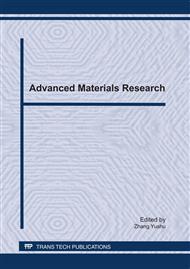p.409
p.414
p.419
p.427
p.432
p.437
p.441
p.445
p.450
Biosorption of C. I. Reactive Red 2 by Immobilized Fungal Biomass
Abstract:
The biosorption of C. I. Reactive Red, from aqueous solutions by calcium alginate immobilized Penicilium sp. biomass was studied in a batch system. The effects of solution initial pH, temperature, NaCl concentration and initial dye concentration on dye biosorption were investigated. In batch experiments, the dye removal efficiency decreased with increase in solution pH, and the maximum dye biosorption of immobilized biomass was 93.20% at pH 2. In the contrary, the percentage of dye removal was increased in the dye biosorption with the increasing temperature in studied temperature. The Langmuir and Freundlich isotherm models were applied to experimental equilibrium data and the Langmuir model better described the equilibrium dye uptake than the Freundlich model. According to the Langmuir model, the maximum dye uptake was obtained as 120.48mg/g. The results indicate that the immobilized Penicilium sp. biomass can be used as an effective biosorbent to removal C. I. Reactive Red from aqueous solution.
Info:
Periodical:
Pages:
432-436
Citation:
Online since:
February 2011
Authors:
Keywords:
Price:
Сopyright:
© 2011 Trans Tech Publications Ltd. All Rights Reserved
Share:
Citation:


